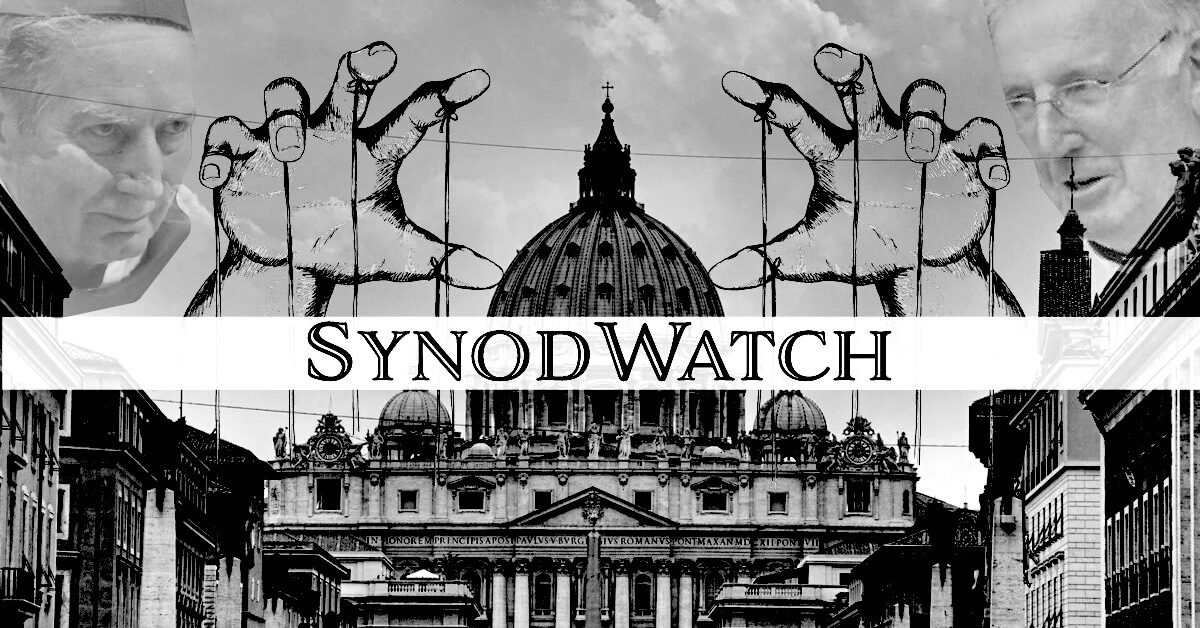Fr. Serafino Lanzetta has an excellent new book out called The Symphony of Truth. As a writer with a focus on the roots of Pope Francis’s pontificate, I found this book fascinating. From multiple angles, Fr. Lanzetta tells the backstories behind today’s ecclesial crisis.
Often, we can trace the root of a current problem back to these sources: the rebels against Humanae Vitae, Martin Luther, and the Modernists/postmodernists.
The Rebels Against Humanae Vitae
You may know Cardinal Leo Joseph Suenens as the episcopal predecessor of Cardinal Godfried Dannneels of the St. Gallen mafia. He was the bishop of Mechelen-Brussels, the primatial see of Belgium. But Suenens was even more than this. In his memoirs, “Suenens calls himself…’the father, the initiator’ of [the Vatican II text] Gaudium et Spes,” says Fr. Lanzetta (121).
 Suenens’s enthusiasm for the text dampened, notably, when Pope Paul VI sent modi reaffirming Church doctrine on matrimony and birth control. As Fr. Lanzetta explains, “Suenens supported Schema III [which became Gaudium et Spes] because he hoped to see the Church’s position on birth control modified in the chapter entitled De Matrimonio” (122).
Suenens’s enthusiasm for the text dampened, notably, when Pope Paul VI sent modi reaffirming Church doctrine on matrimony and birth control. As Fr. Lanzetta explains, “Suenens supported Schema III [which became Gaudium et Spes] because he hoped to see the Church’s position on birth control modified in the chapter entitled De Matrimonio” (122).
Ultimately, “thanks to Cardinal Suenens, the chapter on matrimony in Gaudium et Spes remains one of the Vatican II texts most open to interpretation,” says Fr. Lanzetta (122). When Humanae Vitae brought clarity on the birth control issue, Suenens led the Belgian episcopate in rebellion against the encyclical.
And now, the spirit of Suenens seems to live on in attempts to link Pope Francis’s Amoris Laetitia with Vatican II’s Gaudium et Spes. According to Fr. Lanzetta, the idea is to let consciences choose birth control in light of the latter text’s focus on spousal “dignity” (124). This twisting of the Catholic doctrine on conscience was used by the opponents of Humanae Vitae who cited in particular the disastrous Winnipeg Statement of the bishops of Canada.
“You opened the future,” a colleague once told Suenens (123).
Martin Luther
But the rebellion against Humanae Vitae only tells part of the story. To further understand many key fault lines in the Church, we have to go back to Martin Luther.
Take, for instance, the infiltration of the ideology of divorce into the Church. Fr. Lanzetta’s first essay names the two “capital enemies of marriage” as the French Revolution and Martin Luther. Specifically, Fr. Lanzetta says Luther prepared the way for further deviations via the idea that divorce and adultery might be “disapproved of in the spiritual law” but “tolerated in the temporal law” (10).
The 2017 filial correction (which Fr. Lanzetta signed) finds a connection between Luther’s view and Pope Francis’s:
[Luther’s view was that] Christians must not divorce even in the case of adultery (the spiritual law); but divorce exists and was granted by Moses because of sin (the worldly law). The permission to divorce is thus seen as a limit put by God upon carnal people to restrain their misbehavior…
How can we not see here a close similarity with what has been suggested by Your Holiness in Amoris laetitia? On the one hand marriage is supposedly safeguarded as a sacrament, while on the other hand divorce and remarriage are regarded ‘mercifully’ as a status quo to be – although only ‘pastorally’ – integrated into the life of the Church.
The Modernists/Postmodernists
Already in the early 1900s, Pope St. Pius X’s Pascendi recognized that the Modernists felt “no horror at treading in the footsteps of Luther.”
But some of the most piercing words of Fr. Lanzetta’s book are reserved for our “graduation” past the Modernism of the early twentieth century.
In exploring the real roots of the sexual abuse crisis, Fr. Lanzetta writes:
The very root of this grievous scandal is modernism, which has already become postmodernism. No longer content to change dogmatic formulas with the flow of time, we have graduated to ignor[ing] them completely. Like a great book on a dusty shelf, doctrine has no influence on our daily life (119).
And that is our tragedy: not that doctrine has changed but that it has no apparent relevance to our postmodern moment.
Which is why I appreciate Fr. Lanzetta’s approach to doctrine all the more. His book opens with an essay on “the sacrament of matrimony as the spousal love of Christ for His Church,” allowing us to listen first to the refreshing springs of truth. “The vivifying doctrine of the Church on marriage and divorce is like fresh bread to nourish our souls, never a heavy burden to weigh down men and women,” says Fr. Lanzetta (6).
Amidst our ecclesial crisis, we need more of this clarity – more of this symphony of truth.
Editor’s note: for a detailed look at the origins and activity of the St. Gallen Mafia, see Ms. Meloni’s book of the same name.


